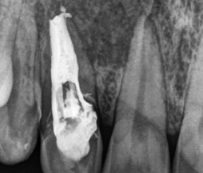Endodontic treatment of dens invaginatus with periapical lesion
DOI:
https://doi.org/10.17532/jhsci.2022.1756Keywords:
dens invaginatus, dens in dente, endodontic treatmentAbstract
Dens invaginatus or dens in dente represent anomaly of the developing tooth due to invagination of the enamel organ into the dental papilla. Dens invaginatus is usually diagnosed by standard radiological methods (RVG, OPG, and 3DCBCT). Clinical examination may reveal a mottled, dilated or conical shape of the crown. Endodontic treatment of dens invaginatus can be difficult and complex due to the deviated anatomy. This report describes the successful endodontic treatment of a maxillary lateral incisor that had dens invaginatus and a large periapical lesion. Clinical examination in a 30-year-old patient revealed an acute periapical abscess, and a dens invaginatus type II was diagnosed after radiography. Due to the existing anatomy, endodontic treatment of the main canal was performed through two access cavities, which enabled chemo-mechanical treatment and access to all parts of the root canal. The canal of the invaginated tooth was treated through the third access cavity.
Downloads

Downloads
Published
License
Copyright (c) 2022 Selma Jakupović, Anita Bajsman, Amra Vuković, Adnan Šehić, Meris Jušić, Amela Sofić, Fuad Julardžija

This work is licensed under a Creative Commons Attribution 4.0 International License.










